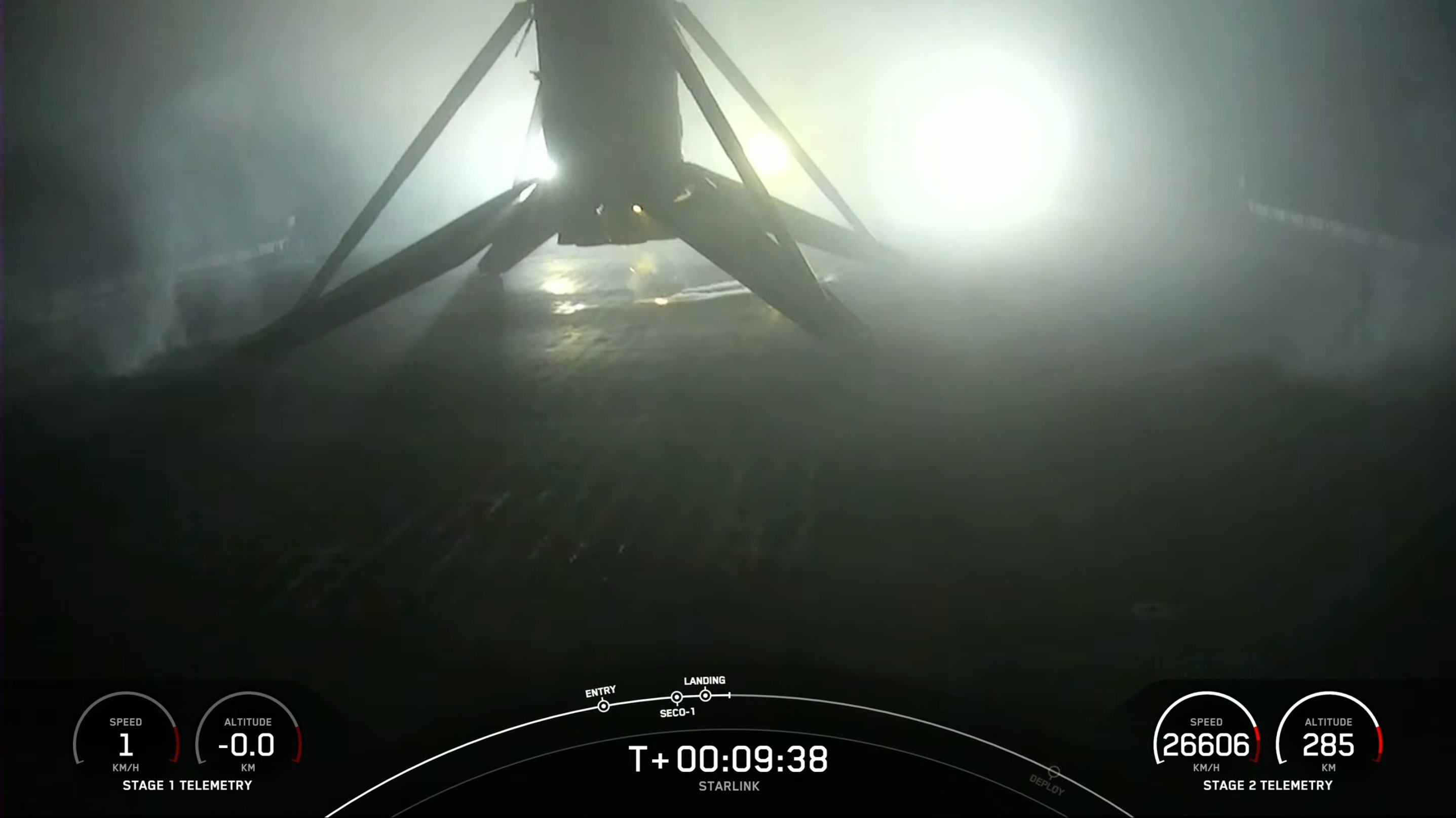SpaceX launched 15 more of its Starlink internet satellites Monday night (Aug. 7) and landed the returning rocket on a ship at sea.
A Falcon 9 rocket topped with the Starlink spacecraft lifted off from California's Vandenberg Space Force Base Monday at 11:57 p.m. EDT (8:57 p.m. local California time and 0357 GMT on Aug. 8).
The Falcon 9's first stage came back to Earth as planned, landing on the SpaceX drone ship Of Course I Still Love You about 9.5 minutes after launch.
Related: Starlink satellite train: How to see and track it in the night sky

It was the fifth launch and landing for this particular booster, according to a SpaceX mission description.
The Falcon 9's upper stage, meanwhile, will continue hauling the 15 Starlink satellites to low Earth orbit, where they will be deployed about 14.5 minutes after liftoff. However, it may take a bit longer than that to get confirmation of deployment success, SpaceX representatives said during Monday's launch webcast.
This was the second Starlink launch for SpaceX in as many days. A Falcon 9 lofted 22 of the satellites from Cape Canaveral Space Force Station in Florida on Sunday night (Aug. 6).
Get the Space.com Newsletter
Breaking space news, the latest updates on rocket launches, skywatching events and more!
SpaceX has now launched 4,918 Starlink spacecraft to date, and more than 4,500 of them are currently functional, according to satellite tracker and astrophysicist Jonathan McDowell.
Editor's note: This story was updated at 12:15 a.m. ET on Aug. 8 with news of successful launch and rocket landing.
Join our Space Forums to keep talking space on the latest missions, night sky and more! And if you have a news tip, correction or comment, let us know at: community@space.com.

Michael Wall is a Senior Space Writer with Space.com and joined the team in 2010. He primarily covers exoplanets, spaceflight and military space, but has been known to dabble in the space art beat. His book about the search for alien life, "Out There," was published on Nov. 13, 2018. Before becoming a science writer, Michael worked as a herpetologist and wildlife biologist. He has a Ph.D. in evolutionary biology from the University of Sydney, Australia, a bachelor's degree from the University of Arizona, and a graduate certificate in science writing from the University of California, Santa Cruz. To find out what his latest project is, you can follow Michael on Twitter.
-
Classical Motion There's another batch. It's was true what was forecast at the beginning of the year. Not just space x...but all the others too. I have a question and it is not a mock. Does anyone have to do an impact statement on the environment this might effect? It's getting thick up there.Reply -
billslugg US environmental laws only go as high as 100 km.Reply
There are 5 UN treaties that affect space activities.
Those who launch are responsible for the damage their spacecraft does.
There are no limits placed on number of spacecraft.
There needs to be some upgrades I think.









